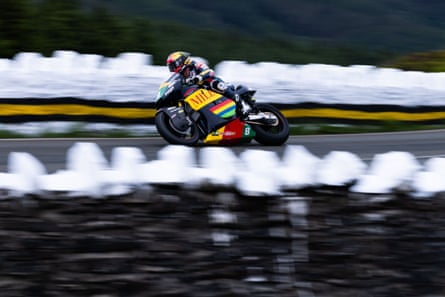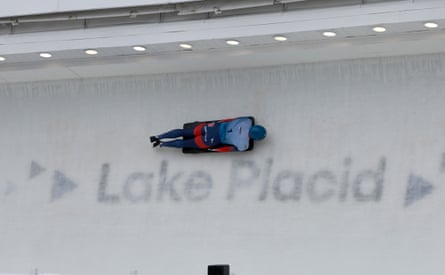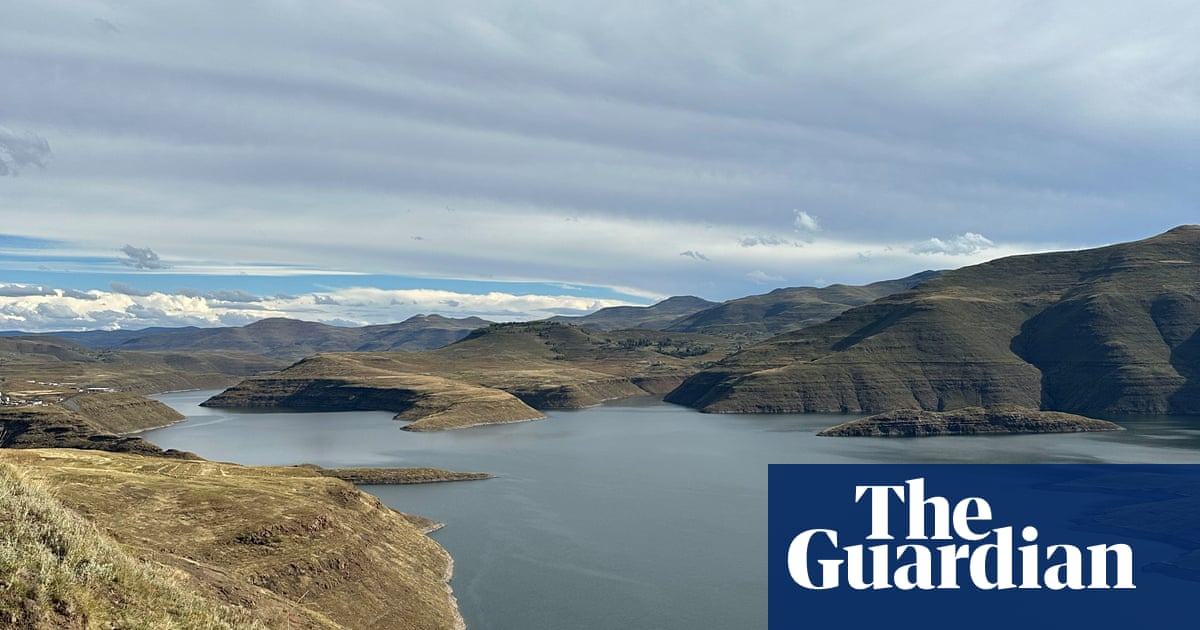Last year I visited St Moritz’s infamous Cresta Run. You know the one – the vertiginous skeleton course that has killed a number of its participants and maimed many more. I was with a group of friends who were attempting it for the first time, and who quickly became addicted to the adrenaline fix. I stubbornly refused to even contemplate it.
It’s not just that my mates are braver than me – they are – but they’re all decent athletes, cricketers, hockey players, marathon runners and Channel swimmers. They have rapid reflexes and hand-eye coordination: I barely have a sense of where my arms and legs end. There are endless ways to hurt yourself on a crushingly heavy toboggan with razor-sharp runners that’s hurtling at 50mph between sheer walls of solid ice, and if anyone was going to slice off a finger or break their head landing upside down, it was me.
We all have different tolerances for risk. Plenty of my friends refuse to contemplate cycling, even though they know it would get them about town quicker and save them money. I don’t think twice about the dangers. But I’ve seen and experienced enough near-misses to know they have a point.
Last Saturday, the Isle of Man Senior TT race – the showcase event of the island’s annual motorbike-racing festival – was called off only six minutes before it was due to start. Gusty wind and rain made conditions tough all week; now they were causing experienced riders serious concern. The organisers heeded the warnings and scratched the blue-riband race for only the second time in its 118-year history.
That’s a pretty serious intervention for a motor sport meeting that is already considered the most dangerous on the planet. The TT races are held on the island’s regular roads and you only need to watch a few moments from one of the bikes’ onboard cameras to appreciate how terrifying it is. The trees, telephone boxes and brick walls lining the roadside may whip past like pixellated scenery but they’re all too solid, and all too close. There have been 156 competition fatalities since 1907.
It is tempting to balk at a sporting contest that has resulted in death almost every year it has been held. For those outside the motorcycling community, the acceptance of such a high toll seems not just alien but foolhardy and irresponsible. But visit the Isle of Man in TT week and you’ll soon see: no one there is glorifying danger, either in the paddock or on the sidelines. My own experience, when I spent time in the former some years ago, was of riders who could not have been more cognisant of, or serious about, the risks they were facing.

Our attitudes towards risk – in sport, as in life – aren’t fixed. Just look at how far rugby union has moved on player safety since professionalisation – changes in the scrum sequences, new laws on tackling, concussion protocols, smart mouthguards. In 1977, the England cricketer Dennis Amiss was laughed at when he took to the crease in a batting helmet. Within 25 years they were mandatory for every junior player.
If sports have sometimes celebrated the physical danger they pose that’s no surprise, given how many have their roots in combat preparation and masculine coming-of-age traditions. Ancient civilisations from Greece to China promoted martial arts. The stickball game that’s the precursor to lacrosse is called kapucha toli by the Choctaw, AKA “the little brother of war”.
Safety isn’t of paramount concern when you’re moulding soldiers or executing undesirables. Chariot racers hurtling around Roman circuses were often trampled by horses or dragged under their own wheels (and this was considered family entertainment, at which women were welcome). Sunday archery practice, mandatory in England from 1363, was frequently lethal, in spite of the standard warning call: “’Ware the prick!”
I learned the latter from Steven Gunn and Tomasz Gromelski’s new book, An Accidental History of Tudor England. Throwing sports were popular in the summer back then and there are records of bystanders being hurt or killed by all sorts: sledgehammers, stones, pikestaffs and plough parts. When drowning rates spiked among Cambridge undergraduates in the 16th century, the university banned swimming (a first offence earned you a public beating, a second, expulsion).
“It’s not that they’re reckless about risk,” Prof Gunn says, “but sometimes, other things seem more important.” Many of the footballing deaths he came across were accidental stabbings, because the players – working men – had nowhere safe to leave the knives they usually carried in their belts. “And if you haven’t got a knife when you get to the end of a game, how are you going to have anything to eat?”

Our own era can offer similar stories. The rapid rise of extreme sports in the 90s reflected a wider shift towards individualism, with personal freedom and self‑expression reaching an ecstatic apotheosis in their dopamine hits and adrenaline-fuelled highs. In a stable and affluent society, it is possible to declare that “life is for living” through pursuits that shorten your odds of dying.
Motor sport has always been dangerous (motorbike racing especially so – the tragic deaths of two British Superbike riders at Oulton Park in May were another reminder of that). But attitudes towards acceptable risk have changed even there, as the post-Senna history of F1 demonstrates. And in recent years many measures have been taken to make the TT event safer – especially after 2022, when it endured its joint-deadliest year.
The past two years have witnessed no fatalities, despite several bad crashes last week and one rider remaining in hospital in a serious condition. Does the scratching of the Senior TT indicate that attitudes to acceptable risk are changing even on the Isle of Man?
By sheer coincidence, I found myself at a reunion for our Cresta Run trip last week, surrounded by dozens of people who had thrown themselves down the icy terror and lived to tell the tale. There was a bond there that I would never share, forged by the dangers that people had knowingly undertaken together. I couldn’t make their choices, but I can still admire them.

.png) 3 months ago
48
3 months ago
48

















































